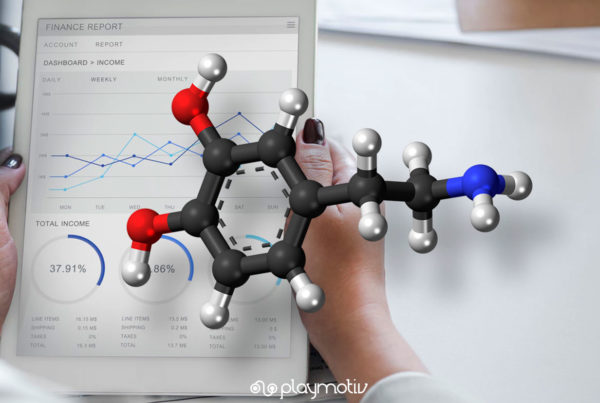As in other marketing fields, new technologies have substantially modified the way of managing the launch of a new brand or product. The uncertainty of those involved, the first day anxiousness and the inevitable turbulences that always come when a product first launches, remain untouched though.
According to Joan Schneider and Julie Hall, co-authors of The New Launch Plan, “less than 3% of new products exceed first-year sales of $50 million”. In other words, 97% of new products that reach the market don’t succeed or are, directly, a failure.
Without dealing with astronomical numbers, the life cycle of a product that is about to be launched nowadays can be very short. Intervening at the opportune moment of the process with innovative techniques can be the key to turning doubts into a success. In this article we will explain what role gamification can play during the launch of a new product.
What are the stages of launching new products?
After a long development process that has included market studies, prototypes, product tests, etc., it is time to establish the marketing plan and let your novelty see the light. In order to do so, it is important to follow the different phases of the launch of a product:
- Prominence: the research phase in which you detect the audience for your product, and where you find out what are its needs and the product’s main innovation that covers them.
- Communication: at this stage, it’s time to find the direct and concise message that the product requires to reach the defined audience. It is also the time to define the channels you will use in order to reach it.
- Attraction: this is when you must exploit the competitive advantages of the new product to get the attention of the target. Only by transmitting credibility and trust consumers will give the product a chance.
- Sale: the time has come to implement the product in the market. It this phase, the necessary logistics are activated in order for the product to be easily found by the target audience, at the appropriate sale points and for a reasonable price.
- Resistance: is the moment to ensure that the product meets the expectations. The continuous evaluation of consumer satisfaction is vital to implement adjustments and to generate their engagement.
If this process is rigorously followed and the objectives to be achieved are clear, the launch should be successful. But what happens if something gets stuck between the communication phase and the attraction phase because the message does not reach the target? Or, for example, how could you solve a situation in which the product is not arriving at the shops?
If you are interested, check out article: “Ten reasons why establishing clear goals will improve your sales”
Hack the launch schedule of your product
After putting a lot of effort into development, into carefully selecting the target audience, detecting superiority messages and establishing a detailed Gantt chart for your product’s launch, there are two critical moments that can mean either success or failure for your new product:
- Kick-off meeting: it’s the meeting with the entire sales team and the stakeholders involved in the launch. During this event, it should be clear what the product is, what it is for, what it offers… When the commercial task has to start, all attendees have to be clear about the information transmitted and, most important, have to be motivated to sell the new product.
- Product presentation: a meeting with journalists, a great gala with guests related to the field, an event with influencers… It’s time to publicly present the new product and put it in the hands of consumers.
In these two key moments your launch schedule, it’s vital that the messages and the characteristics of the product are internalized by the attendees. Arousing their interest is not always easy: you have to make sure that they understand the key information of the new product, that they are capable of transmitting them and that they want to do it. To achieve this, gamification can be the element that catapults the launch planning to a new level. How to do it?
Use gamification to make your product succeed
Since childhood, games are one of the best tools to stimulate learning. In order for your team, your stakeholders or your prescribers to become specialists on your new product, gamification is the creative solution you are looking for.
After presenting your product to those involved in its commercialization, we must face the forgetting curve, which implies that attendees will stop remembering 70% of the information received within 24 hours of the event.
Through game and storytelling you can ensure greater information retention and the acquisition of necessary skills to defend the new product thanks to an internalized argumentary that can include technical characteristics, scientific facts, regulations, etc. The process of selling and communicating your product will be much more profitable this way.
In addition, the playful nature of famification will attract more attention from attendees and encourage their desire to share the experience. Never underestimate the ability of motivation to communicate the benefits of a brand or a product.
If you are interested, check out article: “Some information about the impact of gamification in business”
The job doesn’t end after the presentation. Once the product hits the market, gamified strategies can also be developed in order for your message and your product to be understood by the consumer, so that he or she will learn to use the new features you offer, etc.
Case studies of product launches that used gamification
Large companies have already opted for gamification to reactivate different departments of their organizations, such as Mars, which boosted their commercial teams.
Many others, such as Starbucks, have developed reward systems based on scorecards, point cards or markers that serve to retain consumers by offering incentives (discounts, gifts, offers, etc.) as they accumulate purchases. This strategy can be easily adapted for a sales team that needs to be motivated to place a new product on the market: the more sales they do, the greater the incentives they have.
According to Playmotiv’s experience, the average increase in sales of teams that has incorporated gamification is 16%. In addition, 93.5% of the people who have participated in gamification projects have been satisfied with them, which increases engagement and motivation.
The results speak for themselves. Including gamification in product launches can be the difference between achieving great success or going unnoticed.


